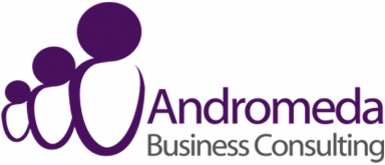Choosing The Best Way To Deliver To Your Customers
Posted on 10th October 2021
There are many more than four ‘Ps’ in marketing to think about these days. However, paying attention to the P that stands for ‘place’, or how you will deliver your products or services to your customers, is still essential. Like bees delivering pollen to the hive, it might sound simple, but there are a lot of options.
Depending on your business model, your distribution channels can include multiple businesses, re-sellers, or other intermediaries to reach your customers. This could include wholesalers, High Street retailing, online marketplaces, or delivery companies.
The approach you choose will affect how your products are perceived, the speed of delivery, and your ongoing relationships with your customers.
Things to think about
Here are some things to consider before you choose how to deliver your products or services.
Your product type – if your product is perishable or is unstable, like food or flowers for example, you will need trusted delivery partners that can move them quickly in controlled conditions. If freshness is a key part of your product offer it might be so important that you need to control this yourself. Part of our decision about the best delivery methods will be based on you product type, brand and values.
Your customers – are your customers other businesses or consumers? While there’s increasing overlap between channels these days buying journeys are different and your customers’ priorities will vary.
Consumers are more likely to make ‘in the moment’ choices while business buyers will need to complete wide-ranging research and several people might be involved in the final decision.
Your options could range from department stores or social media to corporate account management processes.
Intermediaries – traditionally, many businesses work with third party wholesalers who will share the delivery workload for a share of the profits. They have specialist skills that can make sure your products or services are delivered quickly and efficiently. However, you are handing over part of your relationship with your customer to someone else. How will you know that they are meeting your standards and expectations as well as those of your customers?
Many large businesses, like Nike for example, are now taking control and selling directly to their consumers using sophisticated direct to consumer (D2C or DTC) channels.
Choosing your channels
In practice, most businesses need more than one way to deliver to their customers.
Competition – businesses like Amazon have successfully disrupted markets by taking a new and better approach than their competitors. Your approach will have to be at least as good as others in your sector, but it’s worth exploring what your customers want. They might, for example, be willing to accept a slower delivery option if it is cheaper or more environmentally friendly.
Processes – even if you hand over distribution to a third party you will still need to spend time setting everything up and putting controls in place to make sure your standards are met. Consider taking a step back to see if there’s a more efficient way of doing things that will give you more control and more of the profits.
Strategy – you won’t want to make choices that will prevent your business growing in the future. As volumes increase you could find your delivery costs spiralling out of control, so it’s worth investing in some realistic modelling to help you make your choice. Choosing one distribution channel today shouldn’t prevent you from adding others in the future.
Planning for the future
For most market sectors the rate of change is increasing. You won’t want to be the one left behind, so you will need to review your distribution and delivery arrangements regularly and be prepared to make changes quickly if needed.
The pandemic has shown us how fast things can shift, with many customers now favouring options to buy online to pick up in store (BOPIS) and kerbside collections for example.
We can work together to create a strategic framework for your business so that you can make choices about delivering your products or services with confidence, so please get in touch.
Tagged as: Deliverability
Share this post:



